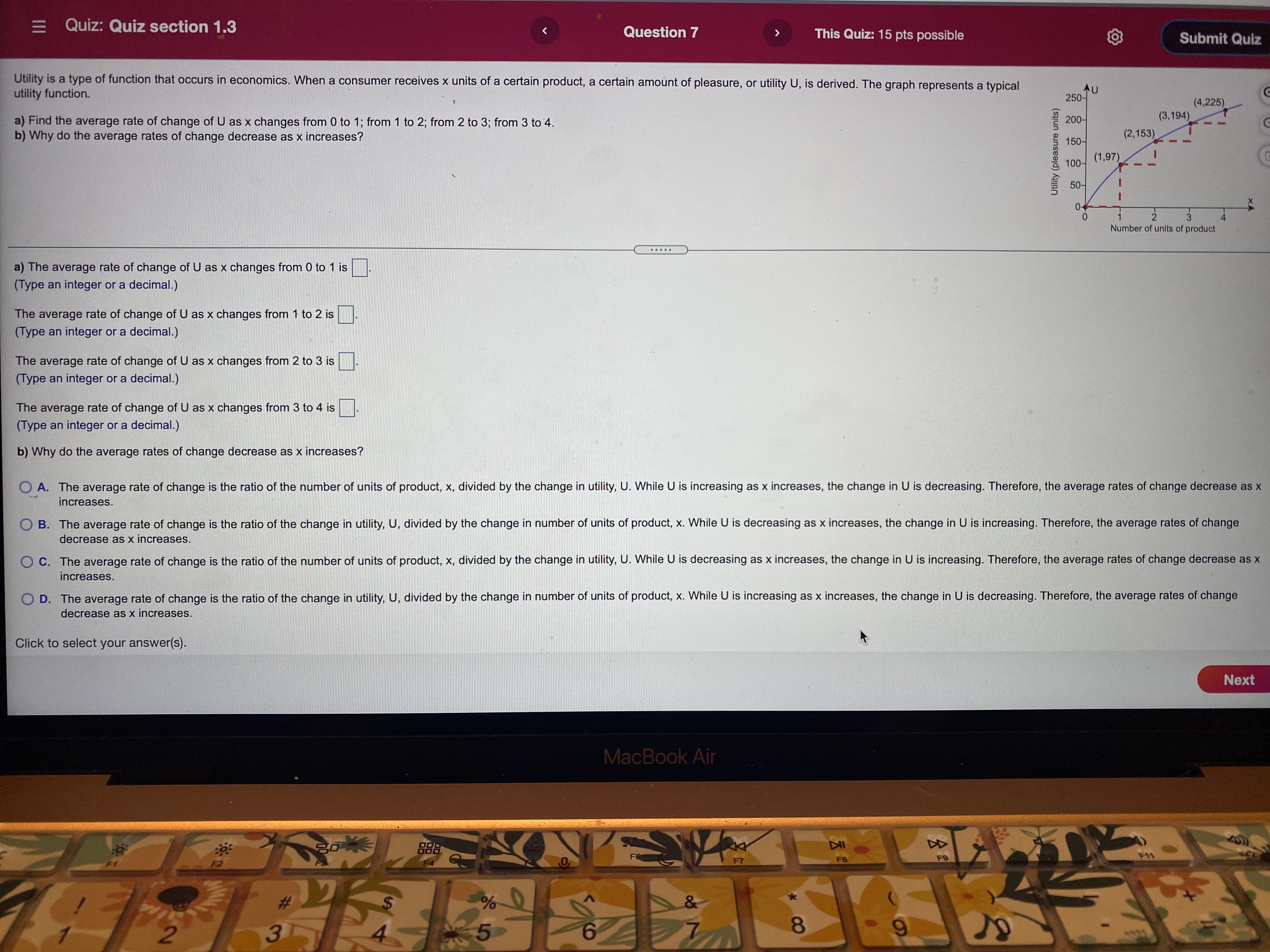Quiz: Quiz section 1.3 Question 7 This Quiz: 15 pts possible Submit Quiz Utility is a type of function that occurs in economics. When a consumer receives x units of a certain product, a certain amount of pleasure, or utility U, is derived. The graph represents a typical utility function. TU 250- (4,225) a) Find the average rate of change of U as x changes from 0 to 1; from 1 to 2; from 2 to 3; from 3 to 4. 200- (3,194) b) Why do the average rates of change decrease as x increases? 150- (2,153) 2 100- (1,97 50- Number of units of product a) The average rate of change of U as x changes from 0 to 1 is (Type an integer or a decimal.) The average rate of change of U as x changes from 1 to 2 is . (Type an integer or a decimal. The average rate of change of U as x changes from 2 to 3 is (Type an integer or a decimal.) The average rate of change of U as x changes from 3 to 4 is. (Type an integer or a decimal.) b) Why do the average rates of change decrease as x increases? A. The average rate of change is the ratio of the number of units of product, x, divided by the change in utility, U. While U is increasing as x increases, the change in U is decreasing. Therefore, the average rates of change decrease as x increases. O B. The average rate of change is the ratio of the change in utility, U, divided by the change in number of units of product, x. While U is decreasing as x increases, the change in U is increasing. Therefore, the average rates of change decrease as x increases. C. The average rate of change is the ratio of the number of units of product, x, divided by the change in utility, U. While U is decreasing as x increases, the change in U is increasing. Therefore, the average rates of change decrease as x increases. O D. The average rate of change is the ratio of the change in utility, U, divided by the change in number of units of product, x. While U is increasing as x increases, the change in U is decreasing. Therefore, the average rates of change decrease as x increases. Click to select your answer(s). Next MacBook Air DII DD FB & 3 8 9







